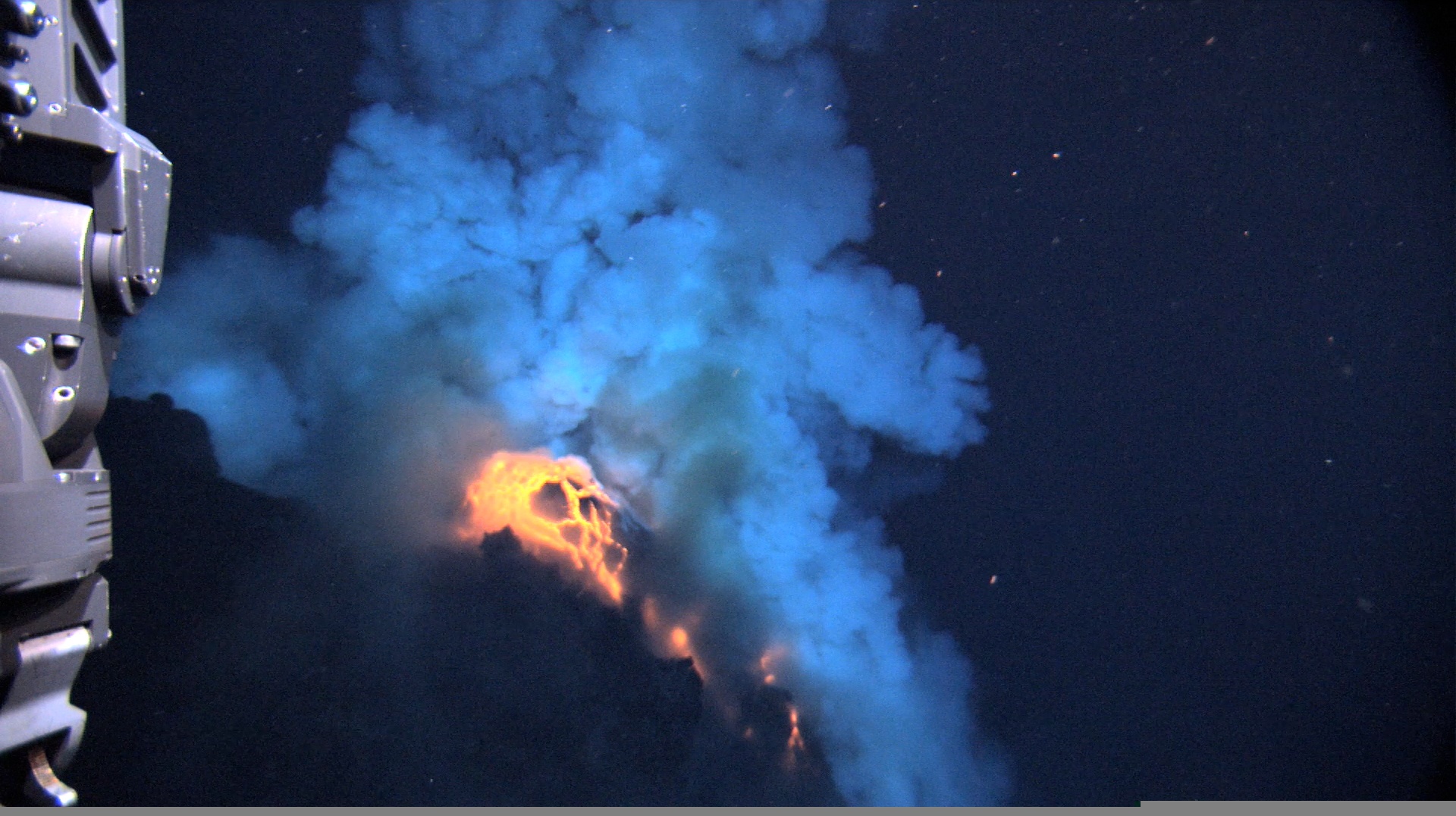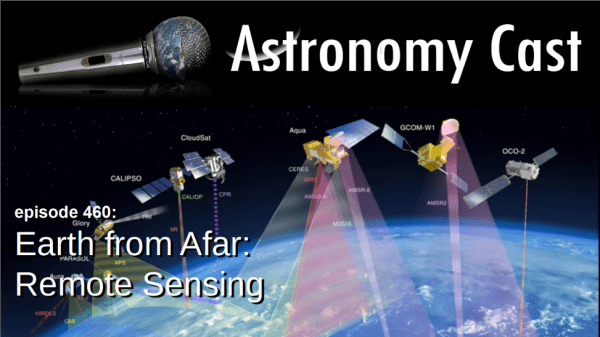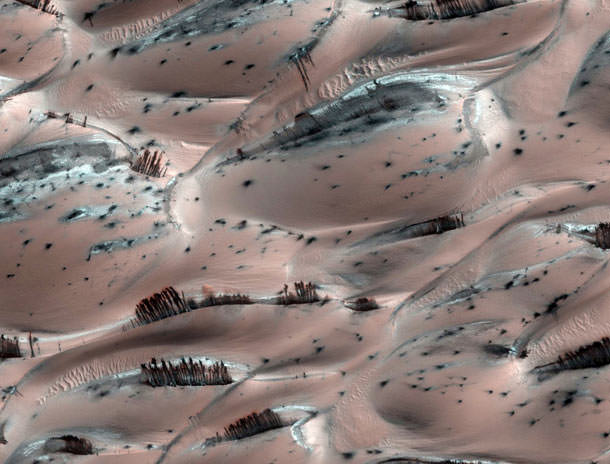Bigger antennas are better, at least according to researchers interested in geospatial monitoring. That’s because higher resolution in monitoring applications requires larger apertures. So imagine the excitement in the remote sensing community when a researcher from Leidos, a government consulting firm, developed an idea that dramatically increased the effective aperture size of a remote radio-frequency monitoring system simply by tying a rotating antenna to a flat “sparse” array. That’s exactly what Dr. John Kendra did, and it has garnered him not only two NASA Institute for Advanced Concepts (NIAC) grants to advance the technology but also a prize paper award at a technical conference on remote sensing. In other words, if implemented correctly, the Rotary-Motion Extended Array Synthesis (R-MXAS) technology could be a game changer for remote sensing applications.
Continue reading “A Unique Combination of Antennas Could Revolutionize Remote Sensing”How a Single Atomic Sensor Can Help Track Earth’s Glaciers
Earth observations are one of the most essential functions of our current fleet of satellites. Typically, each satellite specializes in one kind of remote sensing – monitoring ocean levels, for example, or watching clouds develop and move. That is primarily due to the constraints of their sensors – particularly the radar. However, a new kind of sensor undergoing development could change the game in remote Earth sensing, and it recently received a NASA Institute for Advanced Concepts (NIAC) grant to further its development.
Continue reading “How a Single Atomic Sensor Can Help Track Earth’s Glaciers”Mapping Lava Tubes on the Moon and Mars from Space
Sometimes, all you need for a new discovery is some creative math. That was the case for a new paper by Edward Williams and Laurent Montési of the University of Maryland’s Department of Geology. They released a brief paper at the Lunar and Planetary Science Conference last month that describes a mathematical way to estimate the size of a lava tube using only remote sensing techniques.
Continue reading “Mapping Lava Tubes on the Moon and Mars from Space”Satellite Images Can Help Predict When Underwater Volcanos are About to Erupt
Predicting volcanic eruptions is notoriously tricky. In large part this is because volcanos are unique, each with their own quirks and personalities: the lessons learned from studying one volcano may not apply directly to another. Luckily, researchers are getting better at finding warning signs that they can apply broadly. Some of the most well-known are heightened seismic activity, rising temperatures, expanding magma pools, and the release of gases. New research using satellite imagery now offers a new warning sign for underwater volcanos: a change in the color of the ocean.
Continue reading “Satellite Images Can Help Predict When Underwater Volcanos are About to Erupt”Satellites can Track Microplastics From Space
Sometimes simple and elegant solutions are all that is needed to solve a problem. One problem that was searching for a solution was how to track microplastics. These small particles of plastics are what results after the sun and friction (such as ocean waves) break down larger plastic objects. They have become a huge problem in the ocean, wreaking havoc on ecosystems and their constituent organisms. Now, a team from the University of Michigan have used data originally collected to monitor hurricanes to try to track microplastics, potentially helping to reign in a problem that threatens to engulf the world’s oceans.
Continue reading “Satellites can Track Microplastics From Space”There’s Evidence That Mars Once Had an Atmosphere With Less Oxygen. A Possible Biosignature For Life?
Remote sensing is only useful if scientists have an idea of what they are looking at. That knowledge is especially important for remote sensing applications on other planets, such as Mars, where it is extraordinarily difficult to collect information about an observed object in any other way. To make up for the lack of ability to perform other tests in situ, scientists set up laboratory experiments with different environments and materials and compare the remote sensing data with the observed remote objects.
That is exactly what Jiacheng Liu, a doctoral student at the University of Hong Kong, did with remote sensing data from the surface of Mars. What he found gave new weight to a novel theory – that Mars didn’t used to have a significant amount of oxygen in its atmosphere. The fact that it does now prompts the question of where all the oxygen that exists in the atmosphere today came from. One possible answer is the same place it came from on Earth – photosynthetic life.
Continue reading “There’s Evidence That Mars Once Had an Atmosphere With Less Oxygen. A Possible Biosignature For Life?”Astronomy Cast Ep. 460: Earth from Afar: Remote Sensing
The space age has given us the ability to look at every corner of the globe in every wavelength. It’s revolutionized our ability to predict the weather, keep track of environmental damage, and watch the world change. Today we look at what missions and technologies give us the ability to watch our world from afar.
We usually record Astronomy Cast every Friday at 1:30 pm PDT / 4:30 pm EDT/ 20:30 PM UTC (8:30 GMT). You can watch us live on AstronomyCast.com, or the AstronomyCast YouTube page.
Visit the Astronomy Cast Page to subscribe to the audio podcast!
If you would like to support Astronomy Cast, please visit our page at Patreon here – https://www.patreon.com/astronomycast. We greatly appreciate your support!
If you would like to join the Weekly Space Hangout Crew, visit their site here and sign up. They’re a great team who can help you join our online discussions!
Forests Might Be Detectable on Extrasolar Planets
[/caption]
Excitingly, we’ve been able to detect the composition of atmospheres on a handful of planets orbiting other stars. But if next-generation space observatories go online within the next couple of decades, some scientists propose using a new technique to determine details such as tree-like multicellular life on extrasolar planets.
While previous studies have discussed the likelihood of detecting life on exoplanets through signs of biogenic gases in the atmosphere, or seeing “glints” of light off oceans or lakes, those technique are limited in that, for example, biogenic gases could be signs of either single-celled or multicellular life – not providing much detail — and as we’ve seen from Titan, glints off planetary bodies do not necessarily come from water-filled lakes.
Researchers Christopher Doughty and Adam Wolf from the Carnegie Institution propose using a technique that Earth-orbiting satellites already use to in order to determine types of crops and land cover, as well as cloud detection, atmospheric conditions and other applications.
Called Bidirectional Reflectance Distribution Function (BRDF), this type of remote sensing determines the causes of differing reflectance at different sun- and view-angles. For example, trees cast shadows on the planet, and the large-scale pattern of shadows would make the light reflected off the vegetation to take on specific brightness and color characteristics.
“BRDF arises from the changing visibility of the shadows cast by objects,” the researchers wrote in their paper, “and the presence of tree-like structures is clearly distinguishable from flat ground with the same reflectance spectrum. We examined whether the BRDF could detect the existence of tree-like structures on an extrasolar planet by using changes in planetary albedo as a planet orbits its star.”

They used a computer model to simulate vegetation reflectance at different planetary phase angles and added both simulated and real cloud cover to calculate the planetary albedo for a vegetated and non-vegetated planet with abundant liquid water.
Depending on how accurately planetary cloud cover can be resolved, as well as the sensitivity instruments on proposed missions such as the Terrestrial Planet Finder, this technique could theoretically detect tree-like multicellular life on exoplanets in about 50 nearby stellar systems.
The angles of the spacecraft, the planet and its sun would have to be taken into account but the team says these characteristics would change in predictable ways over time, producing a detectable pattern.
If vegetation on the exoplanet was wide¬spread enough, it would affect the reflective properties of the whole planet.
“We found that even if the entire planetary albedo were rendered to a single pixel, the rate of increase of albedo as a planet approaches full illumination would be comparatively greater on a vegetated planet than on a non-vegetated planet,” they said.
Doughty and Wolf’s paper appeared in the journal Astrobiology.








